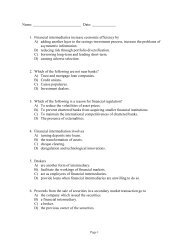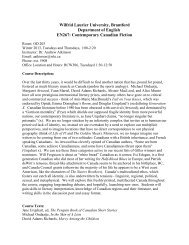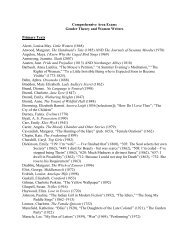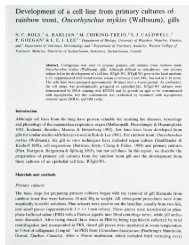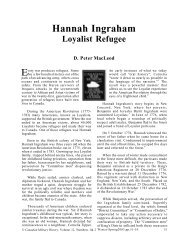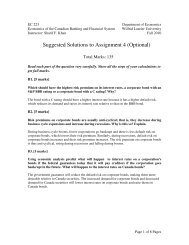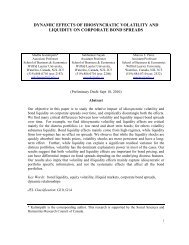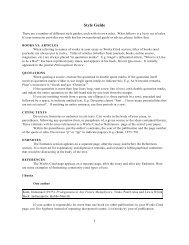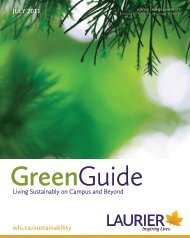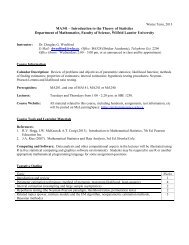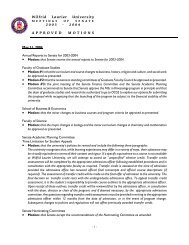Pollen evolution and its taxonomic significance in Cuscuta (dodders ...
Pollen evolution and its taxonomic significance in Cuscuta (dodders ...
Pollen evolution and its taxonomic significance in Cuscuta (dodders ...
Create successful ePaper yourself
Turn your PDF publications into a flip-book with our unique Google optimized e-Paper software.
M. Welsh et al.<br />
apertures. Tellería <strong>and</strong> Daners (2003) found ex<strong>in</strong>e to be<br />
more relevant <strong>taxonomic</strong>ally than aperture features, <strong>and</strong><br />
based on the former characters, dist<strong>in</strong>guished three major<br />
groups of pollen: tectate, microech<strong>in</strong>ate-perforate; tectate,<br />
microech<strong>in</strong>ate-perforate with microsp<strong>in</strong>es; <strong>and</strong> semitectate,<br />
microech<strong>in</strong>ate-microreticulate.<br />
<strong>Cuscuta</strong> (<strong>dodders</strong>), a genus compris<strong>in</strong>g over 180 species<br />
of holoparasitic v<strong>in</strong>es (Stefanović et al. 2007), is nested<br />
with<strong>in</strong> Convolvulaceae (Stefanović <strong>and</strong> Olmstead 2004). It<br />
represents the third most economically important group of<br />
parasitic plants after Striga <strong>and</strong> Orobanche, because<br />
<strong>in</strong>festation by ca. 15 of <strong>its</strong> species can result <strong>in</strong> significant<br />
yield losses <strong>in</strong> numerous crops worldwide (Parker <strong>and</strong><br />
Riches 1993; Dawson et al. 1994; Costea <strong>and</strong> Tardif 2006).<br />
Additionally, numerous <strong>Cuscuta</strong> species are rare <strong>and</strong><br />
endangered, requir<strong>in</strong>g conservation measures (Costea <strong>and</strong><br />
Stefanović 2009a).<br />
As a result of their parasitic lifestyle, <strong>dodders</strong> exhibit<br />
extreme reductions of the vegetative structures, limit<strong>in</strong>g the<br />
morphological characters available for systematic studies<br />
to flowers <strong>and</strong> fruit (Stefanović et al. 2007). It is therefore<br />
imperative to search for <strong>and</strong> discover new characters useful<br />
for the taxonomy of the genus, as well as to create a theoretical<br />
basis for character <strong>evolution</strong> analysis.<br />
<strong>Pollen</strong> <strong>in</strong>formation for <strong>Cuscuta</strong> is relatively scarce. Das<br />
<strong>and</strong> Banerji (1966) described the ‘‘rugulate’’ pollen surface<br />
of C. santapaui <strong>and</strong> C. reflexa, while Ja<strong>in</strong> <strong>and</strong> N<strong>and</strong>a<br />
(1966) compared the pollen morphology of <strong>Cuscuta</strong> hyal<strong>in</strong>a<br />
<strong>and</strong> Convolvulus pluricaulis Choisy. Sengupta (1972)<br />
studied 21 species of <strong>Cuscuta</strong>, which he divided <strong>in</strong>to two<br />
groups accord<strong>in</strong>g to their tricolpate or penta-hexa-colpate<br />
pollen. Liao et al. (2005) analyzed four species from Taiwan,<br />
also recogniz<strong>in</strong>g two ma<strong>in</strong> types of pollen based on<br />
ex<strong>in</strong>e morphology. Type 1, observed <strong>in</strong> C. australis,<br />
C. campestris, <strong>and</strong> C. ch<strong>in</strong>ensis, is characterized by an<br />
ektex<strong>in</strong>e ‘‘f<strong>in</strong>ely reticulate,’’ whereas type 2 exhibited a<br />
reticulate ektex<strong>in</strong>e, as seen <strong>in</strong> C. japonica (Liao et al.<br />
2005). Despite the limited sampl<strong>in</strong>g, these studies concluded<br />
that pollen provides important phylogenetic <strong>and</strong><br />
<strong>taxonomic</strong> <strong>in</strong>formation. Recently, Costea et al. (2006a,<br />
2006b, 2006c, 2006d, 2008a, 2008b) described the pollen<br />
of 24 species as a part of <strong>taxonomic</strong> revisions of major<br />
clades that belong to subg. Grammica. Therefore, to date,<br />
pollen morphology of only about one-quarter of <strong>Cuscuta</strong><br />
species is known. More importantly, pollen diversity <strong>in</strong> this<br />
genus has never been analyzed <strong>in</strong> a broad-scale <strong>evolution</strong>ary<br />
context, <strong>in</strong> a firmly established phylogenetic<br />
framework.<br />
The precise sister group relationships of <strong>Cuscuta</strong> with<br />
other Convolvulaceae members are not clear (Stefanović<br />
et al. 2002, 2003; Stefanović <strong>and</strong> Olmstead 2004). However,<br />
well-supported phylogenies based on both plastid <strong>and</strong><br />
nuclear datasets are available for the genus <strong>its</strong>elf (García<br />
<strong>and</strong> Mart<strong>in</strong> 2007; Stefanović et al. 2007). This newly<br />
established phylogenetic framework enables the exam<strong>in</strong>ation<br />
of pollen characters from an <strong>evolution</strong>ary perspective.<br />
Thus, the ma<strong>in</strong> goals of this study are to: (1) survey the<br />
diversity of pollen morphology across the genus, (2) place<br />
this morphological variation <strong>in</strong>to an <strong>evolution</strong>ary context,<br />
<strong>and</strong> (3) assess the usefulness of pollen ex<strong>in</strong>e morphology<br />
for the systematics of <strong>Cuscuta</strong>.<br />
Materials <strong>and</strong> methods<br />
Sampl<strong>in</strong>g <strong>and</strong> scann<strong>in</strong>g electron microscopy<br />
A total of 148 taxa (135 species <strong>and</strong> 13 varieties) were<br />
exam<strong>in</strong>ed us<strong>in</strong>g 372 herbarium specimens (Appendix).<br />
Efforts were made to sample multiple accessions, particularly<br />
for those species spann<strong>in</strong>g large biogeographical<br />
ranges <strong>and</strong>/or hav<strong>in</strong>g a diverse morphology. As a result,<br />
with the exception of the species known from only one<br />
specimen, all of the exam<strong>in</strong>ed taxa are represented by two<br />
or more collections. Mature anthers were fragmented on<br />
the stubs without acetolysis to preserve the ex<strong>in</strong>e <strong>and</strong> <strong>in</strong>t<strong>in</strong>e<br />
(Harley <strong>and</strong> Ferguson 1990). Samples were coated with<br />
20 nm of gold us<strong>in</strong>g an Emitech K 550 sputter-coater, <strong>and</strong><br />
exam<strong>in</strong>ed with a Hitachi S-570, Hitachi SU-1500 or LEO<br />
1530 FE-SEM at 10-15 kV. Photographs illustrat<strong>in</strong>g the<br />
details of pollen for all the taxa are provided on the Digital<br />
Atlas of <strong>Cuscuta</strong> website (Costea 2007 onwards). <strong>Pollen</strong><br />
measurements were performed on digital SEM images<br />
us<strong>in</strong>g Carnoy 2.0 for Mac OS X (Schols et al. 2002), <strong>and</strong><br />
ImageJ (Abramoff et al. 2004) was used for determ<strong>in</strong>ation<br />
of areas.<br />
<strong>Pollen</strong> characters<br />
We used the term<strong>in</strong>ology of Punt et al. (2007) to prelim<strong>in</strong>arily<br />
evaluate the morphological variation of tectum<br />
perforations <strong>in</strong>to discrete types, potentially utilizable as<br />
qualitative state characters. The correspond<strong>in</strong>g tectum<br />
types encountered <strong>in</strong> <strong>Cuscuta</strong> are: imperforate (no perforations<br />
present), perforate (tectum with puncta \1 lm),<br />
microreticulate (reticulate ornamentation consist<strong>in</strong>g of<br />
muri <strong>and</strong> lum<strong>in</strong>a \1 lm), <strong>and</strong> reticulate (similar to the<br />
previous, but lum<strong>in</strong>a [1 lm) (Punt et al. 2007). However,<br />
the tectum variation <strong>in</strong> <strong>Cuscuta</strong> could not be consistently<br />
separated <strong>in</strong>to these types, because complex morphological<br />
<strong>in</strong>tergradations occur, especially among the imperforate,<br />
perforate, <strong>and</strong> microreticulate pollen gra<strong>in</strong>s of different<br />
species. Therefore, we def<strong>in</strong>ed tectum variation quantitatively<br />
as ‘‘percent perforation,’’ namely the proportion of<br />
the perforation surface (puncta or lum<strong>in</strong>a) from the total<br />
surface of the tectum. Comparable quantitative measures,<br />
123



